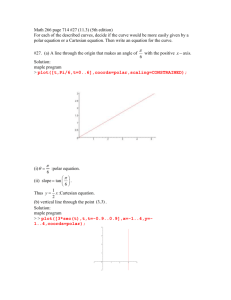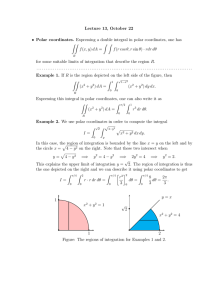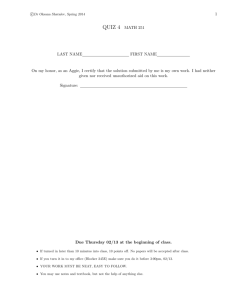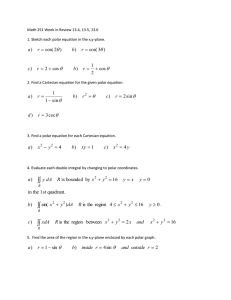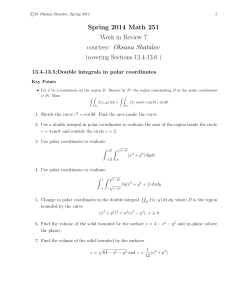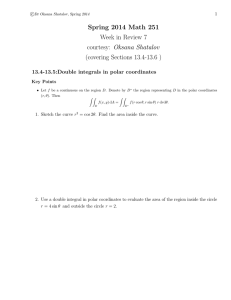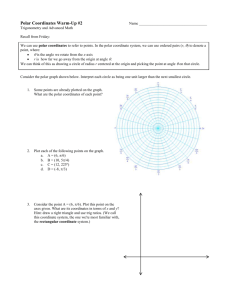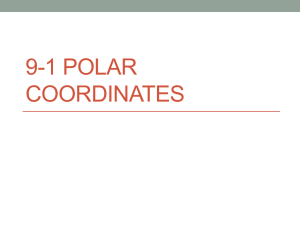Document 10576496
advertisement
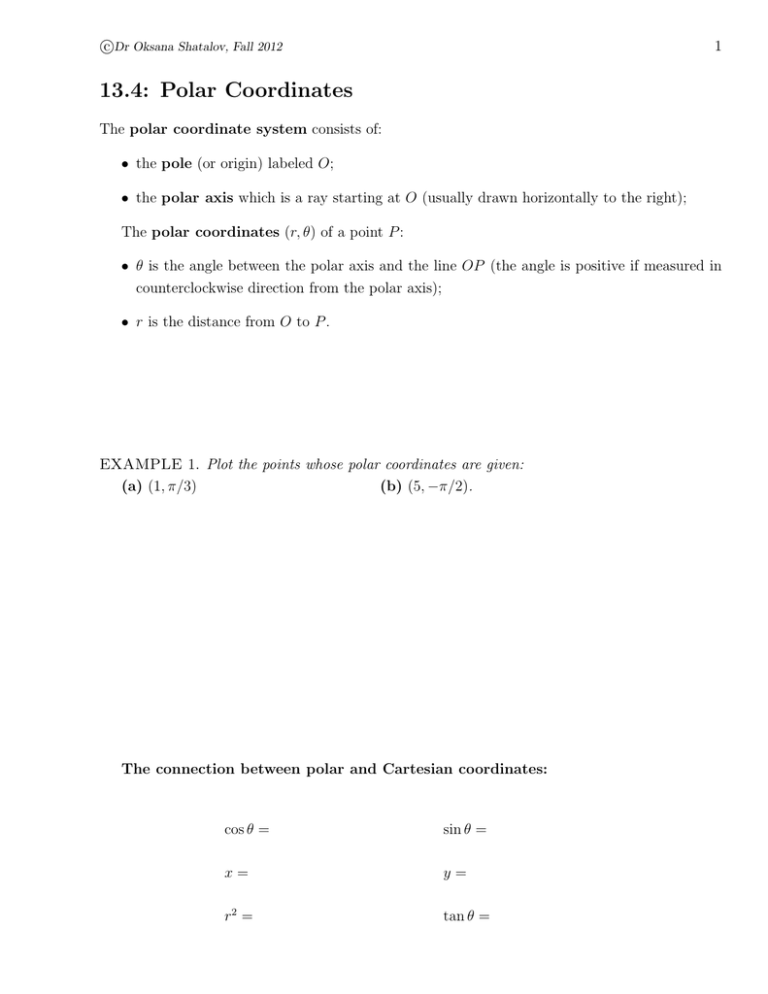
c Dr Oksana Shatalov, Fall 2012 1 13.4: Polar Coordinates The polar coordinate system consists of: • the pole (or origin) labeled O; • the polar axis which is a ray starting at O (usually drawn horizontally to the right); The polar coordinates (r, θ) of a point P : • θ is the angle between the polar axis and the line OP (the angle is positive if measured in counterclockwise direction from the polar axis); • r is the distance from O to P . EXAMPLE 1. Plot the points whose polar coordinates are given: (a) (1, π/3) (b) (5, −π/2). The connection between polar and Cartesian coordinates: cos θ = sin θ = x= y= r2 = tan θ = c Dr Oksana Shatalov, Fall 2012 2 REMARK 2. In converting from the Cartesian to polar coordinates we must choose θ so that the point (r, θ) lies in the correct quadrant. EXAMPLE 3. Convert the point (4, π/6) from polar to Cartesian coordinates. EXAMPLE 4. Represent the point with Cartesian coordinates (−10, 10) in terms of polar coordinates. EXAMPLE 5. Find the distance between the points A(2, π/6) and B(3, π/3) in polar coordinates. c Dr Oksana Shatalov, Fall 2012 3 EXAMPLE 6. What curve is represented by the polar equation r = 12? EXAMPLE 7. What curve is represented by the polar equation θ = π/4? EXAMPLE 8. Sketch the region in the Cartesian plane consisting of points whose polar coordinates satisfy the following conditions: 1 ≤ r ≤ 2, 0 ≤ θ ≤ π. c Dr Oksana Shatalov, Fall 2012 EXAMPLE 9. Sketch the curve with polar equation r = 2 sin θ. EXAMPLE 10. Sketch the curve with polar equation r = 2 cos θ. 4 c Dr Oksana Shatalov, Fall 2012 EXAMPLE 11. Sketch the curve r = 1 + cos θ. EXAMPLE 12. Sketch the curve r2 = 4 cos 2θ. 5
